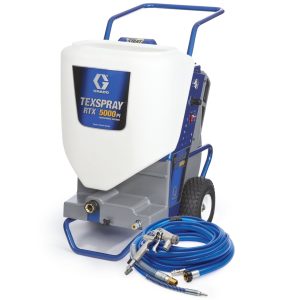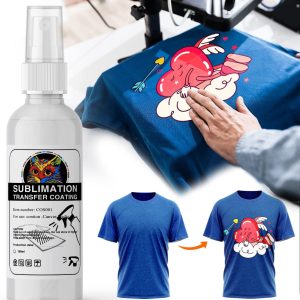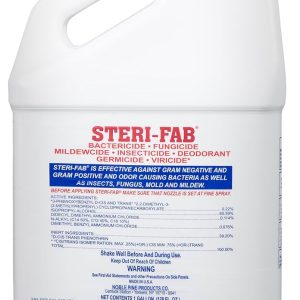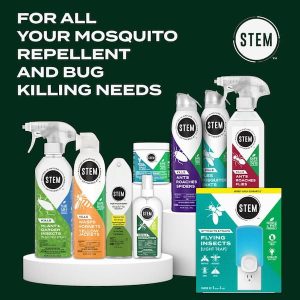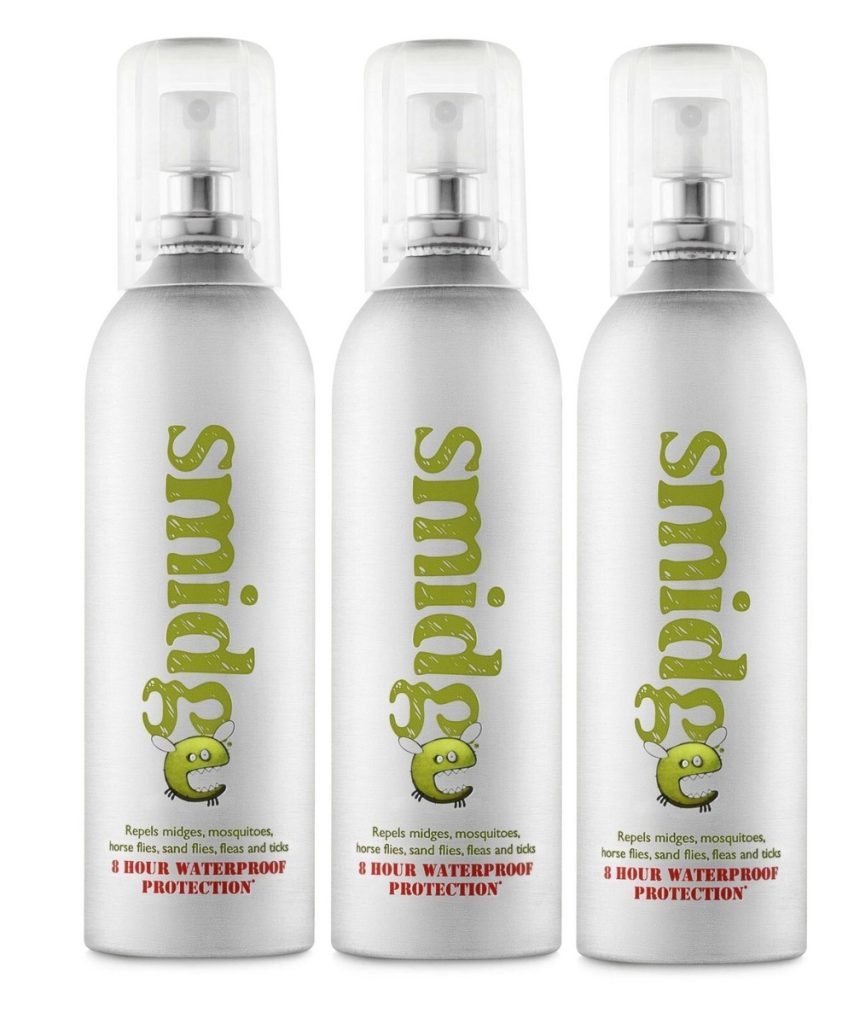
Understanding Midges and Why You Need Protection
Midges are tiny flying insects that often measure just 1-3 millimeters in length, making them nearly invisible to the naked eye until they swarm in massive numbers. These small but formidable pests are commonly found near bodies of water, wetlands, and coastal areas where they breed prolifically during warm months. Unlike mosquitoes that announce their presence with a distinctive buzz, midges attack silently in swarms, leaving victims with multiple itchy, painful bites before they even realize they’re under assault.
The discomfort from midge bites can last for days or even weeks, causing red welts, intense itching, and in some cases, allergic reactions that require medical attention. This is precisely why having effective bug spray for midges is not just a convenience but a necessity for anyone spending time outdoors in midge-prone areas.
The challenge with midges lies in their sheer numbers and persistence. A single swarm can contain thousands of individual insects, and they’re particularly active during dawn and dusk hours when outdoor activities are most enjoyable. Traditional insect repellents that work well against mosquitoes don’t always provide adequate protection against these tiny biters. Midges can penetrate through clothing, find exposed skin, and their bites often go unnoticed until the itching begins hours later.
The economic impact of midge infestations is significant as well, with tourism industries in affected regions reporting losses when visitors avoid outdoor activities due to midge problems. Understanding the biology and behavior of midges is the first step in selecting the right protective measures to keep these pests at bay.
Types of Bug Spray for Midges That Actually Work
When it comes to selecting an effective bug spray for midges, understanding the active ingredients is crucial for making an informed decision. Not all insect repellents are created equal, and what works against mosquitoes may not be as effective against midges due to their smaller size and different behavioral patterns. The market offers several categories of midge repellents, each with distinct advantages and limitations that consumers should carefully consider before making a purchase.
DEET-Based Repellents for Maximum Protection
DEET (N,N-Diethyl-meta-toluamide) remains the gold standard in insect repellents and is highly effective as a bug spray for midges. Products containing 20-30% DEET provide several hours of protection against biting midges, with higher concentrations offering extended duration rather than increased effectiveness. DEET works by interfering with the insects’ ability to detect carbon dioxide and lactic acid, which are the primary attractants that draw midges to human skin. Research conducted by the American Mosquito Control Association has shown that DEET-based products can provide up to 8 hours of protection when applied correctly, making them ideal for extended outdoor activities like hiking, camping, or fishing in midge-infested areas.
The effectiveness of DEET against midges has been documented in numerous scientific studies, with field tests demonstrating protection rates exceeding 95% when proper application techniques are followed. However, DEET does have some drawbacks that users should consider. The chemical can damage certain synthetic fabrics, plastics, and painted surfaces, requiring careful application to avoid contact with gear and equipment. Some individuals experience skin irritation or allergic reactions to DEET, particularly with prolonged or repeated use. Despite these concerns, DEET remains the most reliable option for those who need maximum protection in heavily infested areas. Many outdoor professionals, including park rangers and field researchers, rely on DEET-based formulations as their primary defense against midges.
Picaridin: The Modern Alternative
Picaridin (also known as icaridin) has emerged as a popular alternative to DEET and serves as an excellent bug spray for midges for those seeking a less aggressive chemical option. This synthetic compound, developed in the 1980s, mimics the natural compound piperine found in black pepper plants. Picaridin formulations at 20% concentration provide comparable protection to DEET but with several advantages that make them increasingly popular among consumers. The compound is odorless, doesn’t feel greasy on the skin, and won’t damage plastics, synthetic fabrics, or other materials, making it ideal for use with outdoor gear and equipment.
Studies published in the Journal of Medical Entomology have demonstrated that 20% picaridin products offer up to 8 hours of protection against various biting insects, including midges. The World Health Organization recommends picaridin as an effective alternative to DEET, particularly for use in tropical and subtropical regions where biting midges are prevalent year-round. Picaridin works by blocking the insect’s ability to detect attractants on the skin, similar to DEET but through a different mechanism of action.
This makes it an excellent choice for individuals who have experienced skin sensitivity with DEET products or who prefer a repellent that feels more comfortable during extended wear. Many travelers and outdoor enthusiasts report preferring picaridin-based products because they can be applied to clothing without causing damage, providing an additional layer of protection.
Natural and Organic Bug Spray for Midges
For those seeking natural alternatives, essential oil-based repellents have gained popularity as a bug spray for midges, though their effectiveness varies significantly compared to synthetic options. Products containing citronella, eucalyptus oil (specifically oil of lemon eucalyptus or PMD), lavender, and peppermint oil offer some degree of protection, but typically require more frequent reapplication every 1-2 hours. The Environmental Protection Agency recognizes oil of lemon eucalyptus (OLE) containing PMD (para-menthane-3,8-diol) as an effective natural repellent, with studies showing it can provide up to 6 hours of protection against midges when used at proper concentrations.
Natural repellents work by masking the scent cues that midges use to locate their hosts, but they generally evaporate more quickly than synthetic chemicals. A study conducted by the University of Florida’s Institute of Food and Agricultural Sciences found that while natural repellents can reduce midge bites by 40-60%, synthetic options like DEET and picaridin provided 85-95% protection under the same conditions. Despite lower efficacy rates, natural repellents remain popular among parents with young children, individuals with sensitive skin, and those who prefer to avoid synthetic chemicals. Some manufacturers have developed hybrid formulations that combine multiple essential oils to enhance effectiveness, and these products can serve as adequate protection for short outdoor exposures in moderately infested areas.
How to Apply Bug Spray for Midges Effectively
Proper application technique can mean the difference between full protection and suffering multiple bites, regardless of which bug spray for midges you choose. Many people apply insect repellent incorrectly, leading to gaps in coverage that midges quickly exploit. Understanding the correct application method ensures maximum effectiveness and helps you get the full protection duration promised on the product label.
Effective Application Steps:
- Apply to all exposed skin – Use enough product to cover all exposed areas thoroughly, paying special attention to ankles, wrists, neck, and behind the ears where midges commonly bite
- Don’t spray directly on face – Instead, spray the product on your hands first, then carefully apply to facial areas, avoiding eyes and mouth
- Reapply as directed – Follow the product’s recommended reapplication schedule, typically every 4-8 hours for synthetic repellents and 1-2 hours for natural formulations
- Layer with sunscreen properly – Apply sunscreen first, allow it to dry for 15-20 minutes, then apply insect repellent to avoid reducing the effectiveness of either product
- Treat clothing separately – Use permethrin sprays on clothing, shoes, and gear for additional protection that lasts through multiple washings
- Apply in well-ventilated areas – Avoid inhaling spray mists by applying outdoors or in rooms with good airflow
- Use appropriate amounts – A thin, even layer is sufficient; over-application doesn’t increase protection and wastes product
The timing of application is equally important as technique. Applying bug spray for midges at least 15 minutes before going into infested areas allows the product to dry and bond with your skin, providing optimal protection. Many people make the mistake of waiting until they see midges before applying repellent, by which point they’ve already sustained several bites. For maximum protection during dawn and dusk hours when midges are most active, apply repellent 20-30 minutes before these peak times. When engaging in activities that cause sweating or involve water exposure, choose water-resistant formulations and reapply more frequently than the label suggests, as moisture significantly reduces the effectiveness of most repellents.
Best Practices for Midge Prevention Beyond Spray
While bug spray for midges provides essential personal protection, implementing additional prevention strategies creates a comprehensive defense against these persistent pests. A multi-layered approach that combines chemical repellents with environmental management and protective clothing delivers the most effective results, especially in areas with severe midge infestations.
Clothing as Your First Line of Defense
Wearing appropriate clothing serves as a physical barrier against midges and significantly reduces the amount of exposed skin requiring repellent application. Long-sleeved shirts, long pants, and closed-toe shoes should be standard attire in midge-prone areas, but the type of fabric matters considerably. Tightly woven fabrics prevent midges from biting through material, while loose-fitting clothes create air space between fabric and skin, making it harder for these tiny insects to reach your body. Light-colored clothing is preferable because it makes midges more visible and they seem less attracted to pale colors compared to dark clothing which retains heat and may increase carbon dioxide emission that attracts these pests.
Treating clothing with permethrin spray provides long-lasting protection that remains effective even after multiple washings. Unlike topical repellents applied to skin, permethrin is an insecticide that actually kills midges on contact with treated fabric. A single application can provide protection for up to 6 weeks or through 6 washing cycles, making it an economical complement to personal bug spray for midges. Special midge-proof clothing designed with ultra-fine mesh panels in strategic locations offers excellent ventilation while maintaining protection, and these garments are particularly popular among fishermen and outdoor workers in Scotland and other midge-heavy regions. Some manufacturers produce complete midge-proof systems including jackets with integrated head nets that provide comprehensive protection without the need for constant repellent application.
Environmental Modifications to Reduce Midge Populations
Creating an environment less hospitable to midges requires understanding their breeding and resting habits. Midges breed in moist soil, mud, and standing water, so eliminating these breeding sites around your property dramatically reduces local populations. Improving drainage in low-lying areas, removing standing water from containers and gutters, and maintaining proper lawn drainage prevents midges from completing their life cycle near your home. In yards and gardens, reducing moisture levels through proper watering schedules and improving soil drainage makes the area less attractive to egg-laying females.
Adult midges rest in vegetation during the day, so maintaining a well-trimmed lawn and pruning dense shrubs reduces resting sites and forces midges to seek habitat elsewhere. Strategic landscaping that increases airflow around patios and outdoor living spaces helps as well, since midges are weak fliers and avoid windy conditions. Installing fans on decks and patios creates air currents that make it difficult for midges to land, providing protection without chemicals. For those serious about midge control, professional fogging services can temporarily reduce populations in specific areas before outdoor events, though this should be combined with personal protection like bug spray for midges for best results.
Comparing Popular Bug Spray for Midges Products
| Product Type | Active Ingredient | Protection Duration | Pros | Cons | Best For |
|---|---|---|---|---|---|
| Sawyer Premium Insect Repellent | 20% Picaridin | Up to 12 hours | Doesn’t damage gear, odorless, long-lasting | Higher price point | Extended outdoor activities |
| Repel 100 Insect Repellent | 98% DEET | Up to 10 hours | Maximum strength protection | Strong odor, can damage plastics | Heavy midge infestations |
| Ben’s 30% DEET Tick & Insect Repellent | 30% DEET | Up to 8 hours | Balanced protection and wearability | Moderate skin feel | General outdoor use |
| Ranger Ready Picaridin Spray | 20% Picaridin | Up to 8 hours | Comfortable on skin, effective | Mid-range protection time | Camping and hiking |
| Repel Lemon Eucalyptus | 30% Oil of Lemon Eucalyptus | Up to 6 hours | Plant-based, pleasant scent | Requires frequent reapplication | Short outdoor exposures |
| Avon Skin So Soft Bug Guard | IR3535 | Up to 8 hours | Gentle formulation, moisturizing | Less effective in heavy infestations | Sensitive skin users |
The market for bug spray for midges continues to expand as manufacturers develop improved formulations that balance effectiveness with user comfort and environmental considerations. Consumer Reports testing has consistently shown that products containing 20-30% DEET or 20% picaridin provide the most reliable protection across various insect species, including biting midges. However, the “best” product depends on individual needs, sensitivity, and the specific environment where protection is needed.
When to Seek Professional Help for Midge Problems
While personal bug spray for midges provides essential individual protection, severe midge infestations around residential properties or commercial facilities may require professional pest control intervention. Property owners should consider professional help when DIY prevention methods fail to reduce midge populations, when infestations interfere with normal outdoor activities, or when particularly sensitive individuals experience severe reactions to bites. Professional pest control companies employ integrated pest management strategies that combine habitat modification, targeted insecticide applications, and long-term prevention planning to achieve sustainable midge reduction.
Professional midge control often involves larviciding treatments that target breeding sites before adult midges emerge, which is far more effective than trying to control flying adults. Licensed applicators can access commercial-grade products not available to consumers and have the expertise to identify breeding sites that property owners might overlook. In areas with chronic midge problems, establishing a maintenance program with quarterly treatments can keep populations suppressed throughout the active season. Tourist destinations, golf courses, and outdoor event venues frequently employ professional midge control services to ensure visitor comfort, and these services can be scaled for residential properties experiencing persistent problems that personal bug spray for midges alone cannot resolve.
Regional Considerations for Bug Spray for Midges
Midge species and their activity patterns vary significantly by geographic region, which influences the type of bug spray for midges and prevention strategies most appropriate for different areas. In Scotland, for example, the Highland midge (Culicoides impunctatus) is notorious for ruining outdoor activities from May through September, with peak populations in July and August. Scottish midges are particularly aggressive biters and swarm in numbers that can reach millions per cubic meter, requiring high-concentration DEET or picaridin products for adequate protection. The Scottish tourism industry has developed specialized products and clothing specifically designed for Highland midge protection, recognizing these pests as a significant economic concern.
In North America, biting midges vary by region with different species dominant in coastal areas, wetlands, and inland locations. Coastal regions experience “no-see-um” problems, particularly around salt marshes and mangrove areas in southern states like Florida and Louisiana. These coastal midges are most active during early morning and late evening hours, and they can penetrate standard window screens, requiring ultra-fine mesh screens with openings no larger than 0.8mm.
In the Pacific Northwest, midges are less problematic than mosquitoes, but they still appear in significant numbers near rivers and streams during summer months. Understanding local midge species and their behavior patterns helps residents and visitors select the most appropriate bug spray for midges and timing for application, maximizing protection while minimizing unnecessary chemical exposure during periods of low midge activity.
The Science Behind Why Bug Spray for Midges Works
Understanding the scientific mechanisms that make bug spray for midges effective provides insight into why certain products work better than others and how to maximize their protective capabilities. Midges locate their hosts through a sophisticated combination of sensory cues including carbon dioxide detection, heat sensing, moisture detection, and recognition of specific chemical compounds present in human sweat and breath. These tiny insects possess remarkably sensitive antennae equipped with specialized receptors that can detect human presence from considerable distances, with some studies suggesting detection ranges exceeding 30 meters under favorable wind conditions.
Effective repellents work by interfering with one or more of these sensory pathways. DEET, for instance, confuses the insects’ olfactory receptors, making it difficult for them to locate and identify human hosts. Research published in the journal Science revealed that DEET doesn’t simply mask human scent but actively repels insects by triggering avoidance behaviors at the neural level. Picaridin operates through similar mechanisms but with different receptor interactions, which explains why some individuals find one more effective than the other. Natural repellents like oil of lemon eucalyptus work primarily by masking attractant odors, which is why they generally require more frequent application as the volatile compounds evaporate more quickly than synthetic alternatives.
The effectiveness of any bug spray for midges depends on maintaining an adequate concentration of active ingredients on the skin surface. Environmental factors like wind, temperature, humidity, and physical activity all influence how long repellents remain effective. High temperatures accelerate evaporation of active ingredients, while sweating and water exposure physically remove repellents from skin. This is why products with time-release formulations or polymer-based delivery systems provide longer protection periods by slowly releasing active ingredients as surface concentrations diminish. Understanding these principles helps users make informed decisions about reapplication timing and product selection based on their specific activity plans and environmental conditions.
Bug Spray for Midges Safety Considerations
While bug spray for midges provides essential protection against biting insects, understanding proper safety protocols ensures that the benefits outweigh any potential risks associated with chemical exposure. The Environmental Protection Agency regulates insect repellents and requires extensive testing before products reach the market, but users should still follow label directions carefully and take appropriate precautions, especially when using products on children or individuals with sensitive skin.
Key Safety Guidelines:
- Age restrictions matter – Most DEET products are not recommended for infants under 2 months, and concentrations should be limited to 10-30% for children
- Avoid sensitive areas – Never apply repellent to cuts, wounds, irritated skin, or near eyes and mouth
- Wash off after use – Remove repellent with soap and water once you’re indoors and no longer need protection
- Store properly – Keep products in original containers away from heat sources and out of children’s reach
- Check for reactions – Test new products on a small area of skin before full application to check for allergic reactions
- Don’t over-apply – Using more product doesn’t increase protection and only increases chemical exposure
- Ventilation is crucial – Apply aerosol products outdoors or in well-ventilated areas to avoid inhaling concentrated vapors
Pregnant women can generally use DEET and picaridin products safely, but should opt for lower concentrations and avoid prolonged exposure. The Centers for Disease Control and Prevention states that DEET is safe for pregnant and breastfeeding women when used as directed, though some prefer natural alternatives during pregnancy out of abundance of caution. Individuals with respiratory conditions like asthma should be particularly careful with aerosol formulations and may prefer pump sprays or lotion formulations that don’t create airborne particles. Anyone experiencing unusual reactions to bug spray for midges such as rashes, respiratory difficulty, or neurological symptoms should discontinue use immediately and consult a healthcare provider.
Maximizing Protection: Combining Methods
The most effective defense against midges combines multiple protection strategies rather than relying solely on bug spray for midges. This integrated approach acknowledges that no single method provides 100% protection, but layering multiple barriers creates redundant defenses that dramatically reduce bite risk. Professional outdoor guides and researchers working in heavily infested areas routinely employ three or more protection methods simultaneously, demonstrating that the most knowledgeable users recognize the value of comprehensive strategies.
A typical multi-layered protection system includes permethrin-treated clothing as the foundation layer, creating a protective barrier that kills midges on contact with fabric. Over this foundation, users apply personal bug spray for midges to exposed skin areas that clothing cannot cover, such as face, neck, hands, and ankles. Adding physical barriers like head nets or midge-proof jackets provides additional protection for particularly sensitive individuals or during extreme midge activity periods. Timing outdoor activities to avoid peak midge hours (dawn and dusk) reduces exposure, while choosing locations with good airflow naturally suppresses midge activity through environmental factors.
This comprehensive approach proves especially valuable during extended outdoor activities where reapplication of skin repellents may be impractical. Anglers spending all day on Scottish lochs, for example, often wear permethrin-treated clothing and midge jackets while applying topical repellents only to exposed skin areas, achieving full-day protection with minimal reapplication requirements. Similarly, hikers and campers in midge-prone regions can dramatically reduce their chemical exposure by relying primarily on treated clothing and physical barriers, reserving topical bug spray for midges for situations where other methods are insufficient. This balanced approach satisfies both protection needs and the desire to minimize chemical exposure, particularly for individuals who spend significant time outdoors during midge season.
Traveling to Midge-Prone Areas: What to Pack
Travelers heading to destinations known for severe midge problems should prepare specifically for these pests, as being caught unprepared can transform a vacation into a miserable experience. Coastal Scotland, Scandinavian countries during summer, parts of Canada, and certain regions of Australia experience particularly intense midge seasons where inadequate protection leads to literally hundreds of bites during a single outdoor exposure. Smart travelers research their destination’s midge season and pack accordingly, ensuring they have appropriate bug spray for midges and supporting gear before departure.
Essential Midge Protection Travel Kit:
- Two types of repellent – Pack both DEET/picaridin spray and a natural alternative for indoor/evening use
- Permethrin for clothing treatment – Treat outer layers before your trip and allow 24 hours drying time
- Head net – Lightweight mesh nets pack small but provide invaluable protection during severe swarms
- Long-sleeved shirts and pants – Lightweight, light-colored, loosely-fitting options work best
- After-bite treatment – Antihistamine cream and hydrocortisone for inevitable bites that get through defenses
- Fine-mesh screen material – For covering windows and vents in accommodations with inadequate screening
- Portable fan – Battery-operated fans create airflow that keeps midges away from immediate areas
Researching local conditions before travel helps optimize your packing list. Online midge forecast services exist for Scotland and other heavily affected regions, providing real-time and projected midge activity levels based on weather conditions and historical patterns. These forecasts help travelers plan activities during low-midge periods and prepare for high-activity days when maximum protection becomes necessary. Many travelers underestimate midge problems until they experience them firsthand, so erring on the side of over-preparation with multiple types of bug spray for midges and protective gear ensures you’re ready for whatever conditions you encounter.
The Economic Impact of Midges and Protection Products
The economic significance of midges and the bug spray for midges industry extends far beyond individual consumer purchases, affecting tourism, agriculture, and outdoor recreation industries worldwide. In Scotland alone, tourism industry experts estimate that midges cost the economy millions of pounds annually through reduced visitor numbers, shortened stays, and negative reviews that discourage future visitors. A survey conducted by Visit Scotland found that nearly 40% of tourists altered their travel plans or avoided certain regions entirely due to midge concerns, demonstrating how these tiny pests create substantial economic ripples throughout affected regions.
The midge repellent industry has grown substantially in response to consumer demand, with the global insect repellent market valued at over $5 billion and projected to grow at 5-7% annually through 2030. Innovation drives this growth, as companies develop improved formulations with longer protection times, better skin feel, and reduced environmental impact. Scotland has become a testing ground for midge repellent products, with companies conducting field trials in the Highlands where extreme conditions provide stringent real-world evaluation of product effectiveness. Successful products in Scottish trials typically perform well globally, making Scotland’s midges an unofficial quality standard for bug spray for midges effectiveness.
Agricultural and forestry operations in midge-prone regions experience measurable productivity losses when workers are subjected to constant biting pressure. Studies have shown that outdoor workers in unprotected conditions experience decreased productivity of 20-30% during peak midge seasons, as the constant distraction and discomfort from bites reduces focus and work quality. Forward-thinking companies now provide quality bug spray for midges and protective gear as standard equipment, recognizing that the investment in protection pays dividends through maintained productivity and improved worker satisfaction. This industrial application of midge protection demonstrates that these products serve serious economic purposes beyond recreational comfort.
Future Developments in Bug Spray for Midges Technology
The science of insect repellents continues to evolve, with researchers developing next-generation bug spray for midges products that promise improved effectiveness, longer duration, and better environmental profiles. Recent advances in controlled-release technologies allow active ingredients to be slowly released from microcapsules or polymer matrices, extending protection times from the current 8-12 hours to potentially 24 hours or longer with a single application. These slow-release formulations maintain optimal concentrations of active ingredients on the skin surface throughout the wear period, eliminating the traditional decline in effectiveness that occurs as volatile compounds evaporate.
Biological research into midge sensory systems has identified new targets for repellent development. Scientists at the London School of Hygiene and Tropical Medicine are investigating compounds that block specific midge olfactory receptors, potentially creating ultra-targeted repellents that work at much lower concentrations than current products. Other researchers are exploring combinations of repellents and attractant blockers that work synergistically, providing enhanced protection that exceeds what either compound achieves individually. Some experimental formulations incorporate visual deterrents that make treated skin appear less attractive to midges, adding another layer of protection beyond chemical repellency.
Wearable technology represents another frontier in midge protection. Electronic devices using ultrasonic frequencies, electromagnetic fields, or localized air currents claim to repel insects without chemicals, though scientific evidence for these technologies remains mixed. More promising are smart clothing systems with integrated midge barriers and controlled-release repellent fibers that provide continuous protection throughout the garment’s lifespan. As climate change extends midge seasons and potentially expands their geographic range, demand for innovative bug spray for midges solutions will likely drive continued research and development, ultimately benefiting consumers with more effective, convenient, and environmentally friendly options.
Understanding Midge Bite Treatment and Aftercare
Even with diligent use of bug spray for midges, some bites inevitably get through defenses, making proper aftercare knowledge essential for anyone spending time in midge-prone areas. Midge bites typically manifest as small, red, itchy welts that appear within hours of exposure and can persist for several days or even weeks in sensitive individuals. Unlike mosquito bites that usually fade within 24-48 hours, midge bites often intensify over the first few days before gradually improving, and scratching can lead to secondary infections that significantly prolong healing time.
Immediate treatment begins with thoroughly washing bite areas with soap and water to remove any remaining saliva from the bites and reduce infection risk. Applying cold compresses or ice packs to affected areas provides immediate relief by numbing nerve endings and reducing inflammation. Over-the-counter antihistamine creams containing diphenhydramine or oral antihistamines like cetirizine effectively reduce itching and swelling, while hydrocortisone cream addresses inflammation. For severe reactions with extensive swelling or blistering, medical consultation is warranted as prescription-strength treatments may be necessary.
Prevention of secondary complications requires resisting the urge to scratch, which can break the skin and introduce bacteria that cause infections. Keeping fingernails trimmed short reduces damage from unconscious scratching, and wearing light cotton clothing over affected areas provides a physical barrier that prevents direct scratching. Some sufferers find that applying calamine lotion or taking cool oatmeal baths provides soothing relief for multiple bites.
Individuals who experience severe allergic reactions to midge bites should consult with allergists about carrying antihistamines or even epinephrine auto-injectors for emergency use, though such extreme reactions are rare. The best strategy remains prevention through consistent use of effective bug spray for midges combined with other protective measures that minimize bite exposure in the first place.
Frequently Asked Questions About Bug Spray for Midges
What is the most effective bug spray for midges?
Products containing 20-30% DEET or 20% picaridin are generally considered the most effective bug spray for midges, providing 8-12 hours of reliable protection. Studies consistently show these synthetic repellents outperform natural alternatives in field conditions, with DEET having the longest track record of proven effectiveness against various biting insects including midges.
How often should I reapply bug spray for midges?
Reapplication frequency depends on the active ingredient and concentration. DEET and picaridin products typically require reapplication every 6-8 hours under normal conditions, while natural repellents need reapplication every 1-2 hours. Increase reapplication frequency during activities involving heavy sweating, swimming, or rain exposure.
Can I use bug spray for midges on children?
Yes, but with precautions. The American Academy of Pediatrics recommends avoiding DEET products on infants under 2 months old, and limiting concentrations to 10-30% for older children. Picaridin at 10-20% concentration is considered safe for children over 6 months. Apply repellent to your own hands first, then apply to children, avoiding their hands, eyes, mouth, and any cuts or irritated skin.
Does natural bug spray for midges work as well as chemical repellents?
Natural repellents containing oil of lemon eucalyptus (OLE) can provide moderate protection, but generally require more frequent application and offer shorter protection durations than DEET or picaridin. While natural options reduce exposure by 40-60%, synthetic repellents typically provide 85-95% protection. Natural repellents work best for short outdoor exposures in areas with moderate midge activity.
Will bug spray for midges also protect against mosquitoes and ticks?
Most bug spray for midges formulations containing DEET, picaridin, or OLE are broad-spectrum repellents effective against mosquitoes, ticks, and other biting insects. However, tick protection may require higher concentrations and more thorough application to clothing and exposed skin. Check product labels for specific claims about which insects the repellent protects against.
Can midges bite through clothing?
Midges can bite through thin fabrics, especially if clothing is tight against the skin. Wearing loose-fitting, tightly-woven fabrics provides better protection. Treating clothing with permethrin spray creates an additional barrier that kills midges on contact with treated fabric, offering superior protection compared to untreated clothing alone.
What time of day are midges most active?
Midges are typically most active during dawn and dusk when light levels are low and wind speeds are minimal. They prefer calm, overcast conditions and are less active during bright, sunny, or windy weather. Planning outdoor activities during midday hours when sunlight and wind are strongest can significantly reduce midge encounters.
How long does bug spray for midges last on clothing?
When applied directly to skin, repellents last 4-12 hours depending on the formulation. However, permethrin spray applied to clothing can last through 6 wash cycles or up to 6 weeks, providing long-lasting protection. Always follow manufacturer instructions for application to fabrics and allow treated clothing to dry completely before wearing.
Take Action Against Midges Today
Don’t let biting midges ruin your outdoor experiences. Invest in quality bug spray for midges and implement the comprehensive protection strategies outlined in this article. Whether you’re planning a camping trip, fishing expedition, or simply want to enjoy your backyard without constant biting, the right combination of repellents and preventive measures will transform your outdoor comfort. Start by selecting a proven DEET or picaridin-based repellent, treat your outdoor clothing with permethrin, and pack appropriate protective gear for your next outdoor adventure.
For more information about protective products for outdoor activities, check out our guide on candy apple red spray paint for customizing your outdoor gear.
Sources and Citations:
- Centers for Disease Control and Prevention. (2024). “Insect Repellent Use and Safety.” CDC Mosquito Control Resources
- American Mosquito Control Association. (2024). “Biting Midges and Public Health.”
- Journal of Medical Entomology. (2023). “Comparative Efficacy of Insect Repellents Against Culicoides Species.”
- Environmental Protection Agency. (2024). “Repellent Active Ingredients.”
- University of Florida Institute of Food and Agricultural Sciences. (2024). “Biting Midges Management.”
